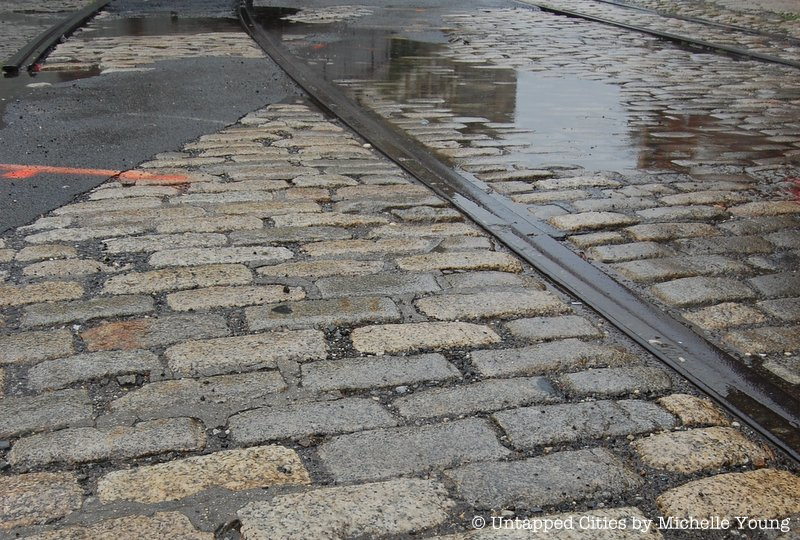6. Why Did Asphalt Become More Popular than Belgian Block?
 Worn down asphalt and Belgian block in Sunset Park, Brooklyn
Worn down asphalt and Belgian block in Sunset Park, Brooklyn
We might love the look of Belgian block today, and the HDC in its study acknowledges that the stone evokes a sense “of the European character that pervaded the city’s early streetscapes and continues to contribute a distinctive sense of place today.” Nonetheless, the study finds that Belgian block started to get competition from asphalt even before the turn of the century: “By 1899, observers were deploring Belgian block’s ‘abominably rough surface and its propensity to get out of level.’ They were difficult to maintain, became slick when wet, and were rued as the noisiest pavement type.”
By 1890, the HDC reports, asphalt was used “extensively” for road beds and “within a decade had nearly surpassed granite in miles of Manhattan street coverage.”





